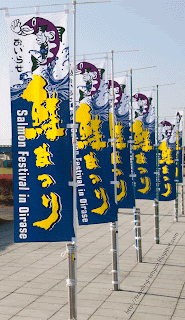Saturday, November 27
My family and I spent two of our four-day Thanksgiving holiday in Morioka City. Unlike the continuous rain on Friday, the weather agreed with us our second day in Morioka. Although sunny, a brisk breeze lingered throughout the day. Our breakfast consisted of beverages and snacks from the Starbucks located in the lobby of the Hotel Royal in Morioka.
Morioka Zoo http://www.h6.dion.ne.jp/~m-zoo/
As Melman the Giraffe from Madagascar stated, “White, sandy beaches; cleverly simulated natural environment; wide-open enclosures. I'm telling you, this could be the San Diego Zoo.” Having lived in San Diego for most of my life, I could honestly say that most zoos I visit cannot compare in terms of the quantity and diversity of animals, the quality of reproduced habitats, and the inundation of souvenir shops. In comparison, Morioka falls into this category of zoos that lack.




Morioka Zoo is the closet one to Misawa. It holds about 650 animals and 100 birds, both native to Japan and imported. Though the zoo is small, young children will enjoy seeing animals on display. Unfortunately, we went on the last weekend that the zoo was open and most animals appeared to have started their winter hibernation. We walked a lackadaisical pace with a three-year old, finished visiting all the animals in just under three hours.





According to the website, Morioka Zoo opens from 04:30 to 21:30 during the months from mid-March to November. It is closed on Wednesdays and during the winter months, from December to mid-March. Children may enter the zoo for free. High school students and adults pay ¥500 yen for admission. Parking costs ¥300.
Iwayama Park Land http://www.iwayamaparkland.com/
This place has all the makings for a horror story about a theme park gone sour. Information about Iwayama Parkland seemed promising and comparable to Hachinohe’s Children’s Land. I could have been because it was the last weekend opened and a blustery day, but this park came across as run-down and void of patrons. Many of the rides appeared rusted and inoperable. Damaged fixtures lay stacked in corners against walls and decrepit attractions look unsafe for carneys to ride.


If we’re in Morioka during the warmer months, we might give this a place another try. It’s conveniently located next to Morioka Zoo. Admission (which does NOT include any rides) costs ¥200 for children four years old to sixth grade and ¥400 for junior/senior high school students and adults. Attendees can either buy tickets for selected rides or purchase an unlimited ticket. Each ride requires two to four tickets and costs ¥100 per ticket. Admission and unlimited rides cost ¥2,200 and ¥2,600, respectively.






Morioka Big Buddha
Though advertised on the back of a Morioka map as the Morioka Great Buddha, it is actually located just north of Morioka City, in the small town of Kamiyonai. I scoured the internet both in English and Japanese and found nothing about this 10-meter Buddha and the Sho’onji Temple grounds on which it is located.


Funerary monuments (gorinto), made of five pieces of stone, serve as a grave marker or cenotaph erected for the repose of the departed. Each piece corresponds to one of five elements – earth, water, fire, winds, and space (from bottom to top).

Buddha sits in the hankafuza (half lotus) position, with his left foot resting on the right leg. Buddha meditates with his hands in the Raigō-in or welcoming mudra. This mudra (hand position) refers specifically to Amida Nyorai when welcoming the dead into the Pure Land Ultimate Bliss, which seems appropriate because a cemetery also rests on the grounds of Sho’onji Temple.




Pagodas, a structure that has evolved from the Indian stupa, usually comes with three (sanju no to) or five (goju no to) stories. Similar to Catholic alters which contain a remnant of a deceased pope; pagodas store remains of the Buddha such as a tooth, usually in form of a representation. Stone pagodas (sekitō) are usually constructed of materials like granite, built smaller than wooden ones, and carved with elaborate decorations, bear sanskirt inscriptions.

Stone lanterns (ishidoro) are closely associated with the Offering of Light Ceremony for deceased souls. The earliest lanterns were introduced to Japan from China through Korea along with Buddhism in the 6th century.


Driving to Morioka from Misawa
- Get on Falcon Road and go toward the Michinoku Toll Road
- Go through the toll booth, pay ¥200, take your ticket, and follow the signs to Morioka
- Take Exit 42 Morioka IC, follow the loop, and turn left onto Route 46
- ** The toll sign posted ¥3600 ONE WAY from Misawa to Morioka, but we were only charged ¥1500. This may have been a special promotion or discount. Bring plenty of yen
The Northern Tohoku Tourist Information Centre is located in the waiting room on the 2nd floor (close to the Shinkansen south ticket gate) of Morioka Station. This centre is designated by the International Tourism Promotion Association), and English language assistance is available.
Telephone: 019-625-2090
Hours: 9:00~17:30
Morioka Zoo and Iwayama Parkland
- From Exit 42 Morioka IC, take a left onto Route 46
- Continue driving through the Iwate University area
- Turn right onto Route 4 when the road comes to a T-intersection
- Turn left at the traffic light Iwayama Parkland and Morioka Zoo
- Follow the signs and stay on the right side when the road looks like a Y-intersection
- Continue on the winding uphill road
- Iwayama Parkland will be on the right and Morioka Zoo will be on the left
Morioka Big Buddha at Sho’onji Temple
- From Exit 42 Morioka IC, take a left onto Route 46
- Continue driving through the Iwate University area
- Turn right onto Route 4 when the road comes to a T-intersection
- Turn left at the traffic light titled 455 Kitayama Tunnel
- Follow the signs toward Iwaizumi
- Turn right at the sign below and follow the narrow winding street uphill until you get to the temple












































